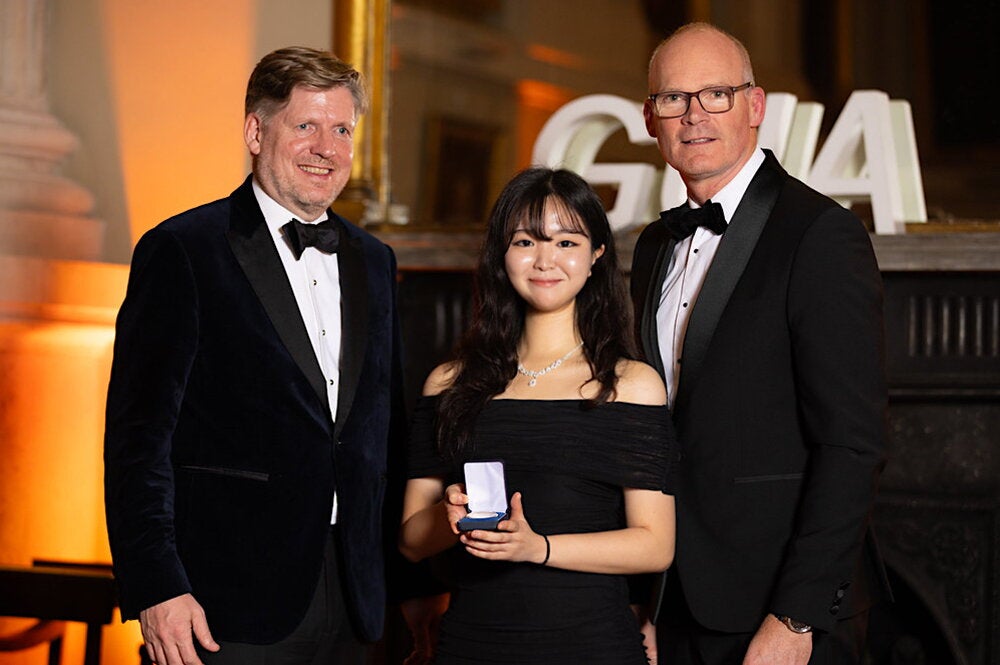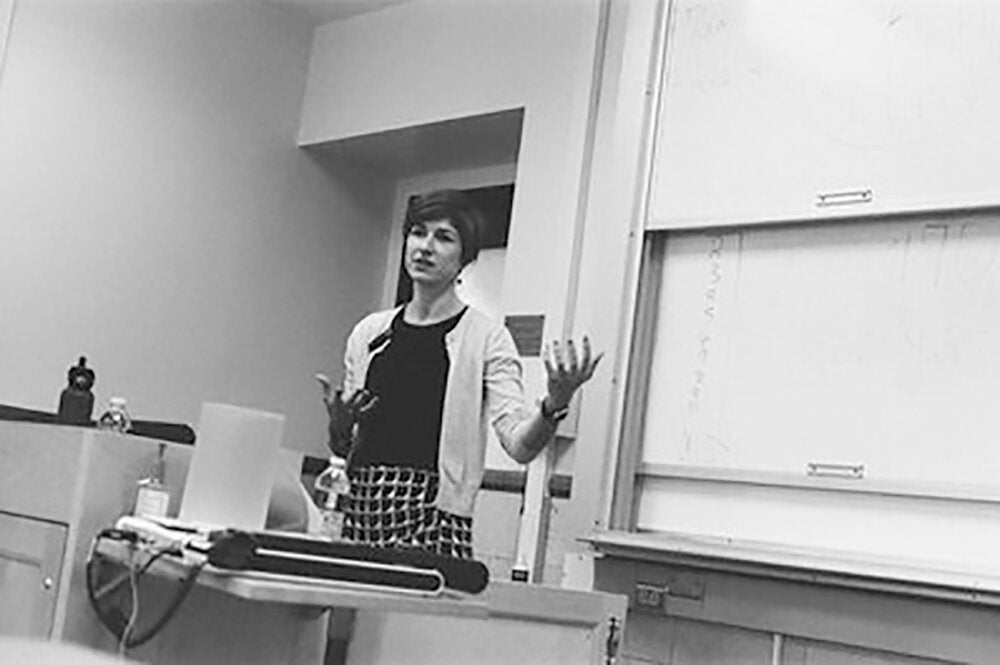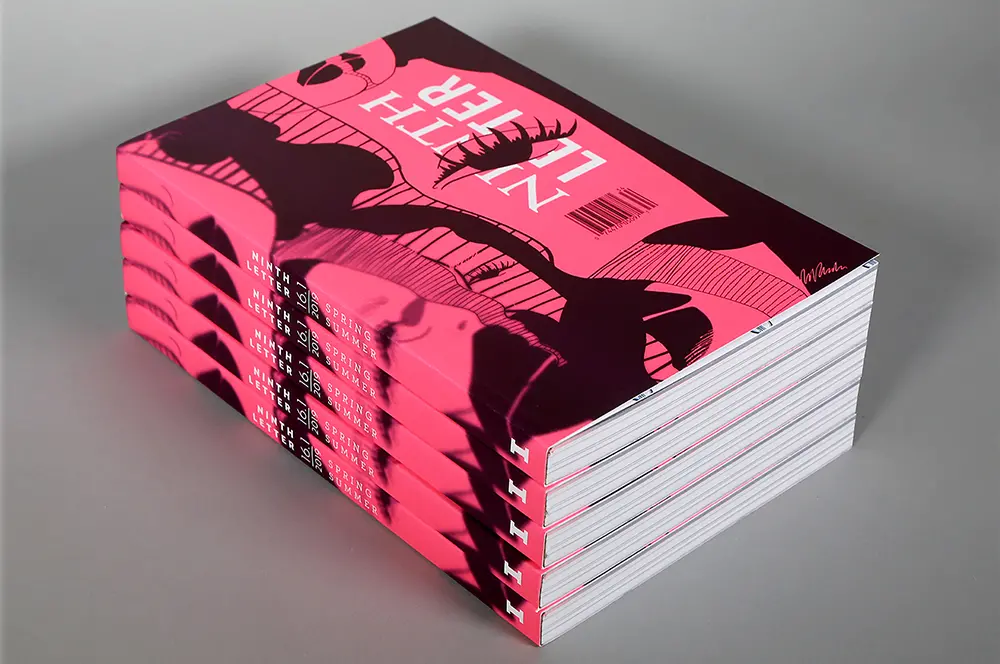
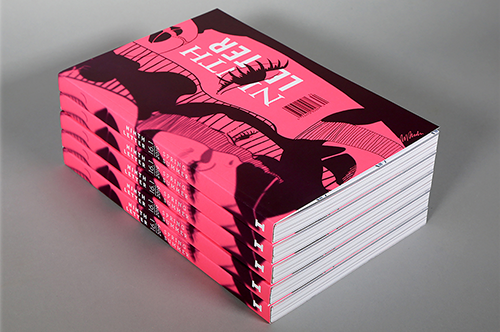
Katherine Powers knew that joining Ninth Letter as an undergraduate would be a challenge, but she took the plunge in hopes that the skills she gains working for the highly touted literary journal will be valuable in her future career.
As many students before her would attest, her move was a wise one. Powers is a junior in creative writing and political science who hopes to one day become a writer and submit her work to literary journals just like Ninth Letter (direct link to journal site here). Currently, Powers is one of 16 undergraduate students working on the digital edition of Ninth Letter, with the next issue scheduled to publish online this summer.
“Creative writing and editing can be a pretty solitary process,” Powers said. “But in this course, we make all of our decisions about what we want to publish and how we should approach our edits as a group. When we’re talking about the strengths and weaknesses of a piece, we are able to bounce ideas off of each other. There were many instances where my classmates inspired me to look at a piece in a new way. When we ask a writer to make edits, we discuss the most effective ways to go about it. The edition that we’re creating is a collaboration between all of us and I think that’s pretty special.”
Devoted to publishing exceptional fiction, nonfiction, and poetry, accompanied by “cutting-edge” graphic design, Ninth Letter—which is inspired by the ninth letter of the alphabet, “I”, in honor of the University of Illinois—launched in 2003 and added a web edition in 2013. The publication is produced by both undergraduate and graduate students as well as faculty members from the Creative Writing Program and the School of Art & Design.
Ninth Letter has been widely recognized and placed in awards anthologies such as the Best American Nonrequired Reading, Best American Poetry, The Pushcart Prize, Best American Short Stories, Year’s Best Fantasy and Horror, Best Creative Nonfiction, Best New Poets, Best of the Net and New Stories from the Midwest.
Shortly after its launch, Ninth Letter was named Best New Literary Journal by the Council of Learned Journals. Indeed, since then it’s built a reputation as a creative and sometimes quirky publication with a loyal following. In 2013, during its 10th anniversary year, the Los Angeles Times described it as “wild, perfectly beautiful.”
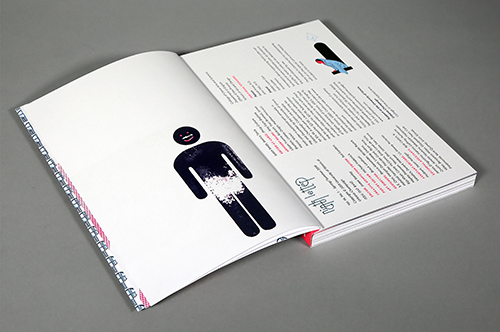
The literary magazine is also an excellent training ground for the publishing industry, as it gives students the opportunity to exercise their creativity through designing and editing. Students and faculty members collaborate to produce the magazine both in print and online.
Because Powers is an undergraduate, she is part of the for-credit English course that works for Ninth Letter. Undergraduates spend all semester working on the digital journal in class, while graduate students collaborate to work on the print edition. Each is published twice a year, making Ninth Letter a quarterly publication.
The journal receives some 5,000 total submissions per year, and students handle much of the screening process. The undergraduate class reads about 600 submissions throughout the semester for a single digital edition; only about 5 percent of those are selected for publication. Powers said that the class debates which submissions should be included in the online journal.
“I think the most challenging part is being confident in your opinions and your ability as an editor,” Powers said. “When you feel strongly for or against a piece, you have to be able to effectively and clearly explain your reasoning and it’s easy to second guess yourself. It’s sometimes easy to think that you’re just a student and you’re not experienced enough to understand something. But we have to push past those feelings and use our skills to articulate how we feel and remember that we are prepared and knowledgeable enough to contribute our ideas to the table.”
Jodee Stanley, editor of Ninth Letter and former director of the Creative Writing Program at Illinois, manages all budget operations, subscriptions and fulfillments, and grant applications, noted that the journal receives submissions for both sets of digital and print publications from writers all over the world. The print version of the journal is distributed nationally and internationally.
“The work that the students are involved in has a national audience and an international audience, and I think that is something that is really valuable for them once they get out into the job market,” Stanley said.
Stanley said that the magazine prints about 1,500-1,800 copies of each issue. They are distributed to bookstores around the country, including Barnes & Noble, and mailed to subscribers.
Stanley said it was very important to introduce the online journal, but the magazine recognizes the importance of maintaining the print version, especially because the print version is what strengthens Ninth Letter’s interdisciplinary relationship with the School of Art & Design.
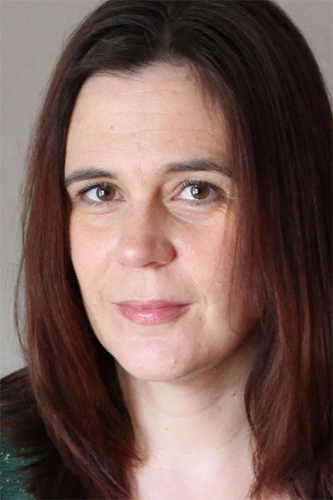
“Our collaboration with Art & Design is very important to us and it has been since the beginning. Our commitment to excellence in print design is a big part of our identity and our mission, so if we had to cut our print production we would lose a part of who we are,” Stanley said.
According to Stanley, about 18 graduate students at a time are involved in producing the print publication.
“It’s an enormous amount of work that our students do,” Stanley said. “They’re the ones who are sitting down and reading through the submissions and making comments on them and deciding which ones should move up through the chain to the editorial meetings.”
Courses have been created to give students the opportunity to work on the journal. Students in English and creative writing can enroll in editing and publishing courses to gain hands-on experience in finalizing written content for the magazine. Students in the School of Art & Design can enroll in production courses where they can learn about graphic design and literary publishing. No matter their task, students receive real-world experience under faculty direction while also having the freedom to think creatively.
To avoid the appearance of preferential treatment, those enrolled in the English and creative writing programs must wait at least three years after graduation before being allowed to submit their own work to Ninth Letter. The print edition, however, features a section called “where we’re at” which is written by graduate students in the program. This is a section dedicated to the Midwest where graduate students can write about life in the region, in an attempt to localize the journal.
Zachariah McVicker, a lecturer in the Department of English who worked on the print version of Ninth Letter as a graduate student at Illinois, said he feels Ninth Letter taught him a lot about the publishing process. Today, McVicker teaches the related undergraduate course in the spring.
“Ninth letter was crucial to my graduate experience,” he said. “As a writer who is trying to get their work published and my work out there, being on the other side of the equation really helps you understand what you’re doing well and what you’re not doing well.”
He feels that Ninth Letter gives students the opportunity to take part in a bigger conversation that extends off campus. For example, McVicker said that his undergraduate students read roughly 600 submissions including essays, poems and stories and then vote on whether they feel the piece should be included in the final product which is published online at the end of each semester.
Student use a forum called Submittable and vote “yes” or “no” and then return to class to debate their decisions.
“We sit around a table with 16 other people and disagree most of the time. We’re okay with disagreeing. We work through that complicated, never destructive conversation and come to a place of agreement or acceptance,” McVicker said.
Not only are students gaining experience debating pieces with each other, but they also gain experience working with authors from all over the world. Powers said that she’s been able to give authors advice and offer critiques on their submission. Most authors are excited and grateful for the opportunity to be featured in the literary magazine, she said.
McVicker noted that he tries to teach students to critique in a way that doesn’t change the art of the piece but aims to improve how the message is conveyed. It is a key concept.
“They are developing a critical vocabulary for recognizing work of quality and importance,” McVicker said.
Editor’s note: Ninth Letter is a nonprofit venture in need of support to continue its operations. Please visit the site to learn more and support the journal.
